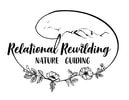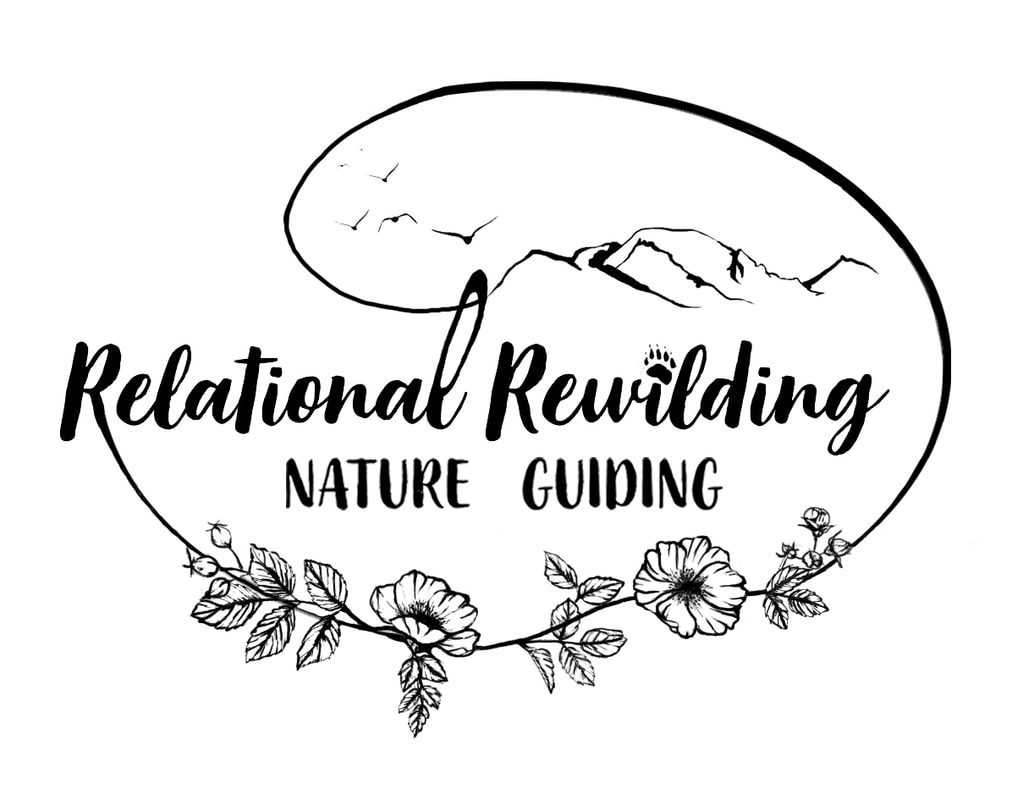What is Rewilding?
When I (Kimberly) share my work and business with others, heads often tilt slightly to the side as if they are trying to get a different perspective of me. Then they ask 'What is rewilding?'. This question opens a floodgate of emotions, thoughts, curiosities and ideas within me, and yet in that moment I feel a need to respond with an 'elevator speech'. But I don't have an elevator speech. The question is too big and requires a dialogue - not a monologue.
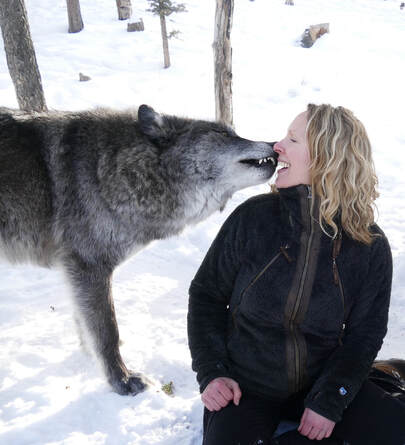
And yet here I am on a one-way technological device, offering a monologue. I'll do my best to share what 'rewilding' means to me and how it shapes the work I do in the world.
Rewilding is a perspective and a process of living a more nature-aware and nature-integrated life, individually and as a community.
Rewilding is a relational response to the changes in and loss of the wild, and is informed by the historical roots of land and human ecology.
More specifically, I consider 4 types of losses that myself and the field of 'rewilding' is responding to:
Rewilding is a perspective and a process of living a more nature-aware and nature-integrated life, individually and as a community.
Rewilding is a relational response to the changes in and loss of the wild, and is informed by the historical roots of land and human ecology.
More specifically, I consider 4 types of losses that myself and the field of 'rewilding' is responding to:
- Loss of Wild Places
- Loss of Wildlife
- Loss of Wild People
- Loss of Wild Lives
What comes up for you as you consider those 4? What do each of those mean to you? When in your life have you experienced any of those losses (or significant changes to them)?
The term 'Rewilding' is entering our modern lexicon and if you google the word, you'll find a plethora of projects, organizations, podcasts, articles, actions, etc... This is good news, despite that its existence is a response to loss.
Rewilding is generally thought of on two levels: The Ecological level and the Individual/Community level. Relational Rewilding Nature Guiding is currently attending to the individual and community level, yet we're excited to have some projects that directly attend to the ecological level in the works. And of course, there is no defined line between the ecological and the individual/community. All is interdependent. The division is for simplification of explanation and to focus tasks.
Rewilding is generally thought of on two levels: The Ecological level and the Individual/Community level. Relational Rewilding Nature Guiding is currently attending to the individual and community level, yet we're excited to have some projects that directly attend to the ecological level in the works. And of course, there is no defined line between the ecological and the individual/community. All is interdependent. The division is for simplification of explanation and to focus tasks.
The Ecological Level
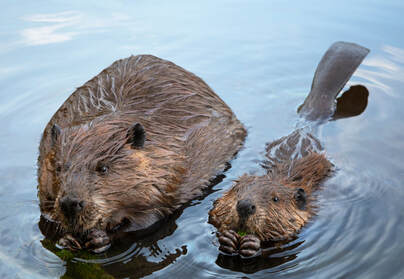
The ecological level can address all four of the losses stated above, though often directly focuses on restoring wild places and wildlife. For wildness to return to (or be preserved in) our domesticated landscapes, people will have to participate in this process. It is primarily human actions that have altered natural processes and wild places, and eliminated key species that regenerate landscapes, such as wolves, beavers and native plants. There is an opportunity in ecological rewilding for participation in healing the land as well as healing the human heart and spirit.
Some examples of Rewilding on an ecological level include:
- Wolf Re-introduction projects (legislation passed to re-introduce wolves on the western slope in CO in 2019)
- Wildlife corridor projects
- Native plant plantings/Non-native plant management
- Organizations such 'Wild Foundation' that is developing stronger leadership and communities globally and locally for species and wild land conservation
- American Prairie Reserve's mission to protect the nations Prairie ecosystem
- An individual (like yourself) committing to stop purchasing single-use plastics in daily life
- Community members contributing through time and/or money to local conservation and education organizations
The Individual & Community Level
We humans are key factors in the ecosystems we dominate. It is said that we are a hyperkeystone species, influencing the other keystone species in the worlds habitats - from deep in the ocean to mountain tops, from high in the atmosphere to your back yard. Our influence of domestication and extermination has not only targeted others outside of ourselves. Over the past 12,000 years we have domesticated and exterminated ourselves in many ways. We, too, need to be rewilded.
Wild People
This individual/community level can address all 4 of the above losses, though often directly focuses on restoring wild people and wild lives. Before going deeper into wild lives, what do I mean by the loss of wild people? I am referring to the loss of Indigenous and First Nation people. The extermination, oppression and marginalization of First Nation people is still occurring. I am a settler here where I live in Colorado. My life and work falls on the backs of people whose lives and land have been stolen. I acknowledge this every day. There are groups, organizations, events and scholarships that are addressing ongoing oppression, reclaiming land, and honoring specific tribes and nations. Some examples of repairing relations may include:
- Supporting organizations such as Friends of Pine Ridge Reservation
- Acknowledging the history and territories of land you live and work on
- Stay updated on local First Nations events; donate, volunteer, attend, support (https://www.colorado.gov/pacific/ccia)
- Cease appropriating practices and elements of other cultures traditions
- Inquire into your own ancestry traditions and develop relationships with your local ecology
Wild Lives
As Homo sapiens, the wild world that developed us still lives within us. Our 300,000 year history (not to mention the 5+ million year history of our ancestors) informs our anatomy, our fitness, our requirements for survival, our health, our drives, our instincts, our skills, our aliveness, and our relationships with local bioregions and the landscapes of Earth. We have a biological design, and physical and relational needs that are shaped by the rest of the living, biological world. We are growing more and more distant from these as we live deeper into artificial environments, devoid of exposure to biotic and abiotic elements, primarily full of human artifacts.
Rewilding to restore our wild lives attends to two aspects of our human nature: Our biological design and our wild mind. This area is the primary focus of our offerings.
Rewilding to restore our wild lives attends to two aspects of our human nature: Our biological design and our wild mind. This area is the primary focus of our offerings.
Biological Design:
Restoring health to our biological design means re-learning how to be a healthy human being on the planet. Our Rewilding consultations and speaking engagements discuss how to re-integrate the following back into our lives. I summarize and organize them according to elements:
- Earth: Natural diet for Homo sapiens (diversity, seasonal, organic, non-processed, foraged, naturally raised...); Dirt time (nature immersion, affiliation with plants and animals)
- Air: Fresh, clean air (most time spent outdoors and high quality indoor air); Deep breathing; Wild awareness (sensory engagement and awareness of environment/surroundings)
- Fire: How we heat our homes, our bodies, our passions, our relationships; the skill of fire-making
- Water: Clean water; fresh spring water when possible; Keeping water clean through supporting clean products and processes in the market-place
Wild Mind:
Are you guided in life by your wholeness or by your cultural training? Has it become normal for you to abandon your inner knowing to obey or please someone else (or an institution)? Are you aware of the depths within your own psyche that hold vast strengths and resources? How much of your daily time is spent thinking or behaving for an unknown future versus living engaged and relationally in the present?
Are you guided in life by your wholeness or by your cultural training? Has it become normal for you to abandon your inner knowing to obey or please someone else (or an institution)? Are you aware of the depths within your own psyche that hold vast strengths and resources? How much of your daily time is spent thinking or behaving for an unknown future versus living engaged and relationally in the present?

From the time we wake up in the morning to the time we sleep we are following directions, rules, laws, social norms and regulations. This generates a domesticated mind - disconnected from intuition and constantly trying to control itself. The theme of control is reflected in our move from hunter-gatherer societies to agriculture economies where humans have been demanding control over the world, each other and the environment. In doing this we become split from the world, our bodies, our feelings, our deep thoughts and our wise, instinctual selves. We lose our wholeness.
Being split from ourselves does not go without its consequences. Perhaps you can sense this in your own life as it manifests as alienation from self, stuckness, confusion, anxiety, depression and feelings of entrapment.
Restoring health to our Wild Mind means examining how our family, institutional and cultural systems influence, suppress and/or condition our beliefs, emotions and behaviors. In our domesticated societies (not cultures*), wild has come to mean dangerous or being out of control, and there are implicit and explicit systems in place designed to control thoughts, emotions, language, behaviors, human rights, who you can love and how you express yourself.
But restoring the wild mind requires more than this examination of systems. It requires a journey into your heart to listen deeply for your own, authentic voice... the voice that does not want to be so domesticated, the voice that does not want to be a 'good girl' or 'good boy' anymore. This journey can dismantle the stories we've created and live by. This can be new and unfamiliar territory and can seem like a lot of work. If you're like me, you settle for the split self and discontented feelings for a long time. Then either due to a significant life event or just being so fed up with being mildly miserable all the time - you decide its time to drop the stories, work for justice, and alter your life. You decide to engage in your primary satisfactions versus societal satisfactions and expectations.
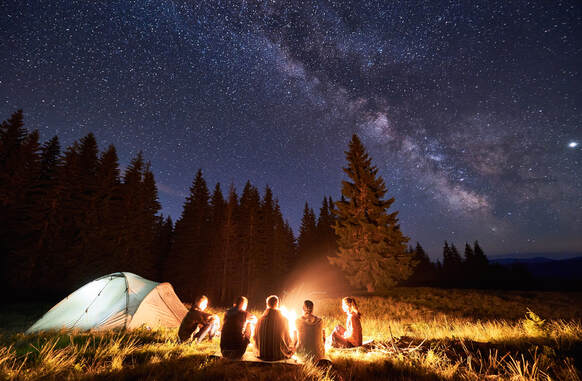
What are primary satisfactions? These are the things your soul expects when you are born. Primary satisfactions nourish and support your vital and connected life. They are oriented to honoring your body, the world, nature, deep relationships, justice and creativity. They include things like being surrounded by elders, stargazing, listening to or making music, ecological participation, tending land, playing with children, service to others, learning about your passions, making art, mentoring youth, honing your earth-based living skills, walking and moving your body over landscapes, sitting around a fire telling stories, growing food, etc.. These are what we want deep down and what we are starving for.
When we're not engaging in our primary satisfactions, we're engaging in societal expectations or secondary satisfactions. These mal-nourish our souls and our communities. They are often superficial and never lead to a sense of deep fulfillment. They may include shopping, gaming, being indoors all day, excessive drinking or drug use, excessive television/computer/social media time, etc... These activities contain the systems described above that send us messages about control and exploitation. They are also very new to humans, considering our 300,000 year history as Homo sapiens walking the wild planet.
This distinction is not meant to alienate or wrong people for such activities. I, too, participate in them. Highlighting the difference is meant to catalyze a personal inquiry into your values and how you gain deep, soulful satisfaction in life.
Relational Rewilding's nature classes are meant to awaken and/or support your engagement in primary satisfactions. Our Youth Mentoring is designed to both draw out and encourage a child's inherent wonder, curiosity and awareness of local ecology. Rewilding Therapy creates openings for restorative and healing relationships with land and your wild heart.
'Rewilding' also includes many forms of behavior and deep ancestral skills such as shelter building, friction fires, knots, cordage making, forms of hunting and trapping, animal processing for food and hides, foraging and gathering, herbal medicine making, wilderness health care, basket weaving, water procurement, etc... If you are interested in going into depth with some of these skills, I suggest contacting The Survival University, located in south central Colorado.
When we're not engaging in our primary satisfactions, we're engaging in societal expectations or secondary satisfactions. These mal-nourish our souls and our communities. They are often superficial and never lead to a sense of deep fulfillment. They may include shopping, gaming, being indoors all day, excessive drinking or drug use, excessive television/computer/social media time, etc... These activities contain the systems described above that send us messages about control and exploitation. They are also very new to humans, considering our 300,000 year history as Homo sapiens walking the wild planet.
This distinction is not meant to alienate or wrong people for such activities. I, too, participate in them. Highlighting the difference is meant to catalyze a personal inquiry into your values and how you gain deep, soulful satisfaction in life.
Relational Rewilding's nature classes are meant to awaken and/or support your engagement in primary satisfactions. Our Youth Mentoring is designed to both draw out and encourage a child's inherent wonder, curiosity and awareness of local ecology. Rewilding Therapy creates openings for restorative and healing relationships with land and your wild heart.
'Rewilding' also includes many forms of behavior and deep ancestral skills such as shelter building, friction fires, knots, cordage making, forms of hunting and trapping, animal processing for food and hides, foraging and gathering, herbal medicine making, wilderness health care, basket weaving, water procurement, etc... If you are interested in going into depth with some of these skills, I suggest contacting The Survival University, located in south central Colorado.
